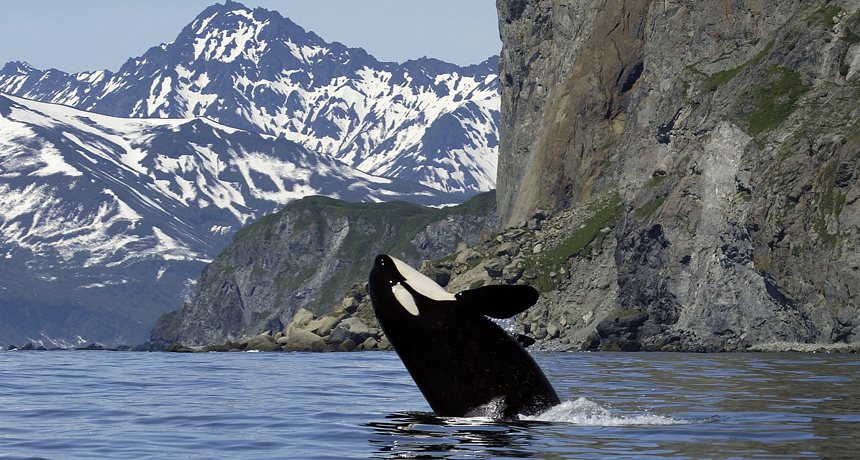arthropod Any of numerous invertebrate animals of the phylum
Arthropoda, including the insects, crustaceans, arachnids and myriapods, that are characterized by an exoskeleton made of a hard material called chitin and a segmented body to which jointed appendages are attached in pairs.
cetaceans The order of marine mammals that includes whales, dolphins and porpoises. The baleen whales (Mysticetes) filter their food from the water with big baleen plates. The remaining cetaceans (Odontoceti) include some 70 species of toothed animals that include beluga whales, narwhals, killer whales (a type of dolphin) and porpoises.
baleen A long plate made of keratin (the same material as your fingernails or hair). Baleen whales have many plates of baleen in their mouths instead of teeth. To feed, a baleen whale swims with its mouth open, collecting plankton-filled water. Then it pushes water out with its enormous tongue. Plankton in the water become trapped in the baleen, and the whale then swallows the tiny floating animals.
dolphins A highly intelligent group of marine mammals that belong to the toothed-whale family. Members of this group include orcas (killer whales), pilot whales and bottlenose dolphins.
killer whale A dolphin species (Orcinus orca) belonging to the order Cetacea (or cetaceans) of marine mammals.
mammal A warm-blooded animal distinguished by the possession of hair or fur, the secretion of milk by females for feeding the young, and (typically) the bearing of live young.
marine Having to do with the ocean world or environment.
plankton A small organism that drifts or floats in the sea. Depending on the species, plankton range from microscopic sizes to organisms about the size of a flea. Some are tiny animals. Others are plantlike organisms. Although individual plankton are very small, they form massive colonies, numbering in the billions. The largest animal in the world, the blue whale, lives on plankton.

